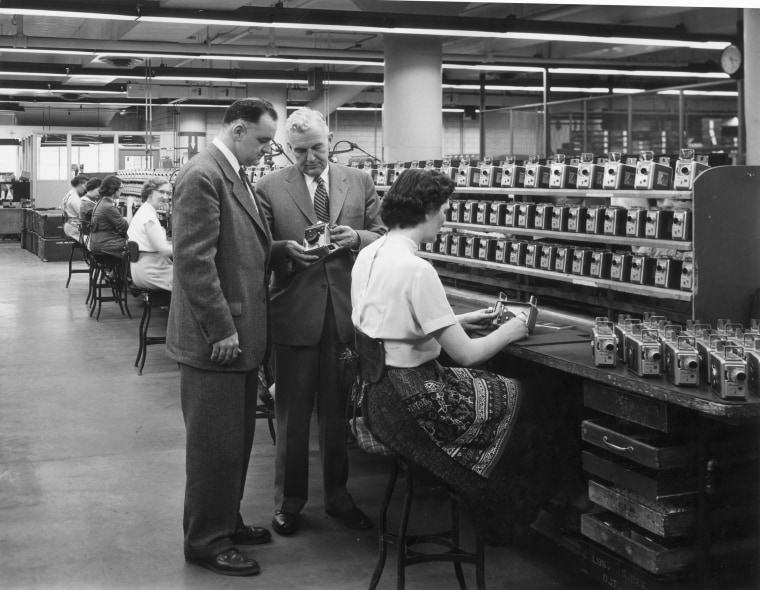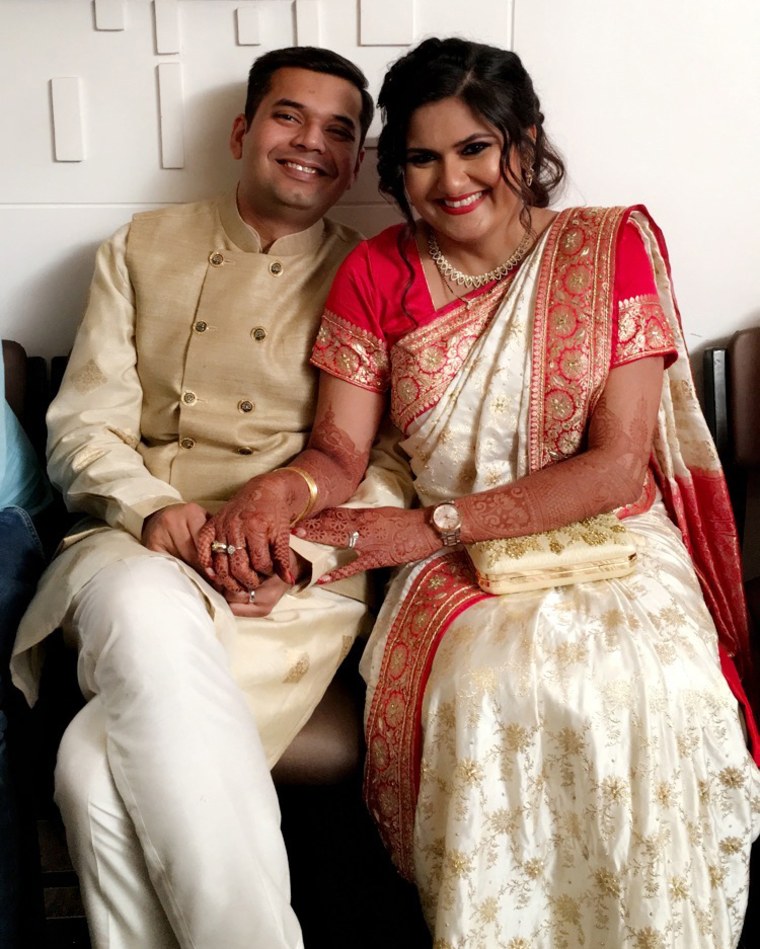Sharon Chen says the photos for her Dallas wedding were a big priority. But with a wedding party that has Asian American, South Asian American, Mexican American and Black women in it, she said she found the photographer options disappointing.
Chen said she looked at 10 to 15 photographers and their aesthetic was heavily filtered and washed out.
“I was looking for a photographer who highlighted natural colors,” said Chen, who is 28 and Chinese American.
“It’s important that they are highlighted in their own unique way,” Chen says. “That’s what I love, is we all look so different so I want that to be shown naturally through the pictures.” (The reporter for this article was a bridesmaid at Chen’s wedding.)
Looking through social media accounts, many photographers would de-saturate their photos so much, an effect called “light and airy,” that it would distort the skin tones, she said.
“Really I relied on Instagram,” she says. “Scrolling two or three times I can tell they haven’t worked with or aren’t trying to represent other couples who aren’t white.”
With wedding season back in full swing, finding a photographer who can capture varying skin tones accurately can be challenging. Experts, brides and wedding parties say they feel it’s become more widespread with the rise of influencers.
And while the popularity of Instagram has made heavily filtered, monochromatic shots the norm in recent years, the problem has been pervasive since the invention of the camera.
‘It’s just that white influencer filter’
Cassie Lopez, 32, who uses the pronoun “they,” has been a photographer since they were 16 and photographing weddings, specifically, since they were 24.
Lopez said they “definitely noticed” the desaturated photos that tend to wash out wedding parties and say it might not be intentional but is a result of photographers using pre-sets.
“The way the pre-set works is it would control everything about the image,” they say. “It might have a pre-set that bumps all the shadows so everything past a certain tone gets bumped. If the pre-set is one that boosted all the shadow to be bumped up a whole lot, those are built to cater to lighter skin tones. The tonal curve reflects lighter skin tones.”
Not all pre-sets wash people out. Another popular one among brides looks more “sepia” or “golden,” Lopez says.
“People want that ambiguous look of being mixed but still white,” they say. “That kind of Kardashian look.”
Sarah Park, 28, says that when looking to hire a photographer for her wedding in Dallas, she said all the photographers seemed to heavily edit their photos, with many using the “light and airy” pre-set.
“It’s just that influencer white filter,” she says. “That’s the kind of style you see when you have to choose from only a handful of photographers in Dallas to capture your moments. You do see a pattern or a trend, which is the washing out of the colors.”
During her engagement shoot, she says, her skin tone was brightened quite a bit. However, for her ceremony in Hawaii, the photographer used less intense edits.
“Our wedding photos in Hawaii, the photographer used a ton of color,” she says. “They let our nature [skin] color stand out Those are our favorite ones.”
‘Early stock film was really designed with light skin in mind’
The “light and airy” filter that many wedding photographers peddle is meant to mimic an old film camera, a technology that wasn’t invented with people of color in mind at all.
Lorna Roth, researcher and professor of communications at Concordia University, spent years interviewing Kodak executives and studying how film was invented. The technology of the early stock film, she says, was really designed with light skin in mind: “I got it from the horse’s mouth.”
This is especially true of the cameras the average shopper might pick up at Walgreens or a big box retailer.
“At the time, Kodak began to produce consumer cameras that were relatively cheap and the film that worked in them and the clients that they imagined they would have tended to be those with a lighter skin,” she says. “Film chemistry was made to reflect a certain lightness.”

This is where the infamous “Shirley card” comes in. Shirley was a Kodak employee and the original model used by photo labs to calibrate skin tones, shadows and light during the printing process. She was also white.
“What they were doing was deciding their version of what they think was ‘the normal,’” Roth says.
Kodak received two product complaints: one from a chocolate company that wanted to show the difference between milk and dark chocolate, and the other from a wood company that wanted to show the difference in its grain.
“Those two sets of complaints, that was their impetus that led to them developing a larger range of browns,” Roth says.
In 1997 the company released a Kodak Gold Max camera, which said it had a dynamic range.
Other companies also started to prioritize diversity in lighting. In 1994, the Tokyo brand Ikegami developed dual skin contour, which could balance the color of two different skin tones in a frame.
“It was an award-winning, breakthrough camera,” Roth says. “A lot of cameras that are available now have that infrastructure and those ideals embedded in the camera itself.”
‘It’s a bias
For Asian Americans and other people of color, the idea that your skin tone needs to be corrected can stir up feelings of colorism, which persists outside of the United States, too.
Aasiya Patel, a 34-year-old nurse educator from Los Angeles, said she and her husband decided to have their wedding in Mumbai, India, where their families are from. She said she had similar issues as brides in the United States.
She noticed that her photographer was trying to use natural light to make certain people’s skin tones appear fairer.
“I had to explain that even though you’re trying to blend everyone so it looks cohesive, these are pictures of the most important day in my life and I want it depicted as reality,” she says.

When she got the photos back, many of her guests were edited to look quite a bit lighter than they are in real life.
“I just felt like we were trying to pretend to be something we weren’t,” she says. “I felt disrespected. These are my guests. I don’t want to whitewash them. They are beautiful.”
Like in the United States, the beauty standard in East and South Asian countries favor lighter skin, too, says Shilpa Davé, an assistant professor at the University of Virginia who studies representations of race and gender in media and popular culture, specifically on South Asians .
“It skews toward this idea of white being the norm,” she says. “And with South Asians, it was related to this idea of North and South and invasion and colonial issues that have permeated and have a long legacy not just in India, but in the world.”
In the United States, being lighter also may make you seem more assimilated, something first-generation and second-generation immigrants feel pressured to do, Davé said.
“Part of that is being new immigrants but not wanting to look too different, but at the same time being exoticized,” she says. “It sort of goes back and forth between the exotic and assimilated version, and color is part of that.”
Ultimately, she says, the technology is reflecting the persistence of colorism. “At the end of the day, it’s a bias,” she says. “A light-skinned bias.”
www.nbcnews.com
George is Digismak’s reported cum editor with 13 years of experience in Journalism